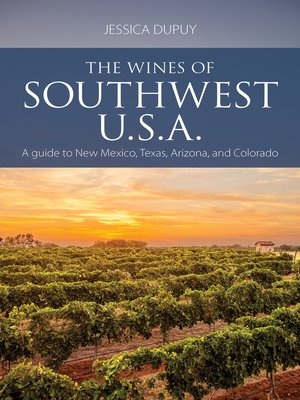The Wines of Southwest U.S.A.
ebook ∣ A Guide to Texas, New Mexico, Arizona and Colorado
By Jessica Dupuy

Sign up to save your library
With an OverDrive account, you can save your favorite libraries for at-a-glance information about availability. Find out more about OverDrive accounts.
Find this title in Libby, the library reading app by OverDrive.



Search for a digital library with this title
Title found at these libraries:
| Library Name | Distance |
|---|---|
| Loading... |
When most people think of the American Southwest they think of arid, windswept terrain; vast ranches framed by barbed-wire fences; and scattered with grazing cattle, terraced rock formations and jagged mountain peaks towering in an array of rich; earthen reds and browns against the backdrop of radiant blue skies; sunsets that fade these vibrant colors into a brilliant of pastel pinks, oranges, and purples. It's the birthplace of the American frontier, the playground for outdoor adventurers, and the inspiration for countless watercolor canvases and vivid oil-painted landscapes. Indeed, this romantic imagery has swayed myriad settlers to the region for centuries. But few would have ever associated the enchanting region with wine. And yet it was in this part of the country where the first vitis vinifera vines in the United States are said to have been planted. As early as 1598, vines were planted by Spanish Franciscan monks in New Mexico and were also planted in West Texas, all the way west to California throughout the mid-17th century. But it really wasn't until the 1970s that the birth of the modern wine industry began in the American Southwest. By and large, Texas has led the pack in terms of overall growth in vineyard plantings and production in the following decades. But other states within the region—New Mexico, Arizona, and Colorado—have also evolved with compelling stories and promising wine industries of their own. This book is in four parts representing each state beginning with Texas, which serves as the cornerstone for this region, followed by New Mexico, Arizona, and Colorado. Each chapter addresses eight key topics to cover the landscape of the wine industries in each state: history, regions, climate, challenges, grapes, leading producers, leading grape growers, future. In addition, each state includes 4 to 5 profile sidebars highlighting pieces of history, culture, or specific personalities related to the wine industries of each state.







